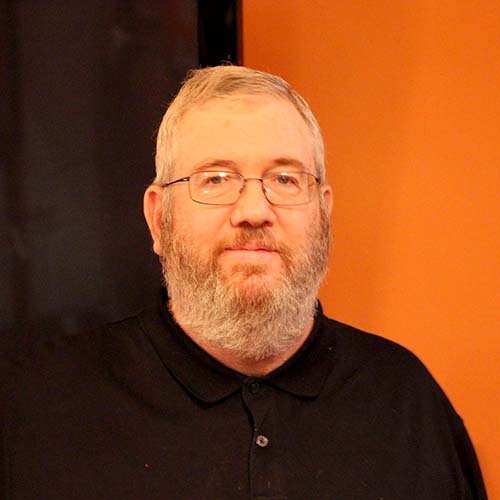- Details
- By Mark Fogarty
- Finance
Having a Native community development financial institution in a Native community correlates to improved credit scores for residents by a hefty 45 points.
That’s according to Libby Starling, director of community development at the Minneapolis Federal Reserve Bank, who cited research by the Center for Indian Country Development that showed a 45 point average gain in Equifax credit scores in Native communities if there was an average ratio of one Native CDFI staff member to 1,000 residents.
Having a Native CDFI “on or close to Indian land improves the entire Native homeownership ecosystem,” Starling told a recent webinar on the state of Native housing held by the National Housing Conference.
Native CDFIs play “a critical role” in Indian Country, she said, by providing affordable and culturally relevant financial services and critical pieces of the puzzle like homebuyer counseling.
Interest in homeownership in Indian Country is high. According to a 2017 survey, 90 percent of renters would like to own a home.
But there are three challenges to Native homeownership: land title status, lending markets, and problematic federal programs that are supposed to encourage lending in Indian Country but have languished.
Making a mortgage on reservation or individual trust land requires a Title Status Report (TSR) from the Bureau of Indian Affairs, which Starling said can take up to a year to procure. Starling added that turtle-like pace may now be starting to accelerate.
Native mortgages are also high cost since most don’t qualify to be bought by federal mortgage agencies, a process that brings down interest rates for borrowers. Native borrowers tend to pay 2 percent higher interest rates on home loans, which can add $107,000 in additional costs over the life of the loan.
Manufactured housing, which is popular in Indian Country, also tends to be high cost, with most financing in the form of “chattel loans” instead of true mortgages.
As well, Starling also said federal Indian mortgage programs have their share of problems.
The Housing and Urban Development Section 184 guaranteed Indian mortgage has been an oversubscribed success, but most of the lending has been done on private property (fee simple) rather than on trust land.
The U.S. Department of Agriculture section 502 loan and the Veterans Administration’s Native American Direct Loan (NADL) have also been underutilized, Starling said.
Mellor Willie (Navajo), director of Native partnerships and strategies for NeighborWorks America, a congressionally chartered nonprofit organization that supports community development, told the audience that the National American Indian Housing Council is putting up $100,000 to create a curriculum on Low Income Housing Tax Credit (LIHTC) housing.
LIHTC units are affordable multifamily rentals partially financed by Treasury Department tax credits. In the dominant culture, they tend to be refinanced after their initial 15-year term, or sold off, sometimes to developers that repurpose them as market-rate rentals, reducing affordability in their areas.
However, an option to convert these units to homeownership after 15 years — there are 32,000 LIHTC units in Indian Country — could be useful, Willie said, noting that partnerships are a key concept for tribes, especially when considering the large Native homeless populations concentrated in urban areas. Local partnerships can help tribes located away from urban areas to help their tribal members who are experiencing homelessness in cities.
Jacqueline Pata, president and chief executive of the Tlingit-Haida Regional Housing Association, also spoke of the value of partnerships in Indian Country.
She pointed out that her regional housing association has 12 members and serves three other tribes, and that each of the tribes is its own sovereign nation, making their relationships much like a strategic partnership.
To that end, the Tlingit-Haida, which has a Native CDFI, in 2019 started to produce housing strategy reports for each of its communities.
The Tlingit-Haida tribe needs more houses, Pata said, noting that, until very recently, the newest stock was built 20 years ago. Now the housing authority is building houses itself with local crews, and the homeowner can be a partner as well, participating through sweat equity.
Fern Orie, chief programs officer at Oweesta Corp., a Longmont, Colo.-based Native intermediary for Native CDDFIs, detailed her organization’s work as a training, lending capitalization and research and policy advocate for tribes. Orie is a member of the Oneida Nation of Wisconsin.
Oweesta is a “relending” CDFI for other Native CDFIs, using two loan capitalization pools of $10 million. Over 23 years, Oweesta has “revolved” $50 million in housing and business loans to Native communities.
Some of Oweesta results include: 182 homes created, 2,654 businesses started featuring 12,000 jobs, 2,868 hours of technical assistance in 2020 and 2021, 3,583 people educated in 2021, 205 certified new trainers, and 3,469 participants in financial education programs.
Orie said a strategic priority is to build the capacity of Native CDFIs to offer homeownership. She pointed to servicing the mortgages (collecting and processing the payments) as a crucial function for tribes.
Pete Upton (Ponca Tribe of Nebraska), the interim executive director of the Native CDFI Network and executive director of Native360 Loan Fund Inc. in Grand Island, Neb., said during the webinar that the national group now has 73 Native CDFIs serving 27 states. The Native CDFIs average between $10 million and $20 million in assets, he said.
Upton also revealed the group’s policy goals, which include having Treasury’s CDFI Fund increase its grants to Native CDFIs from between $30 million and $50 million annually, up from $21.5 million.
“That’s not a lot to go around for 73 Native CDFIs,” Upton said.
Additionally, the group would like the CDFI Fund to have a 10 percent set aside for Native CDFIs for the New Markets Tax Credit program, which the CDFI Fund also administers. Native CDFI Network also would like to see Treasury establish an Office of Native American Programs, similar to HUD.
